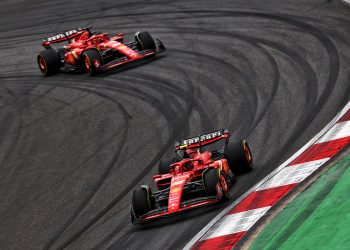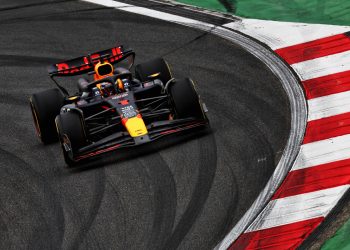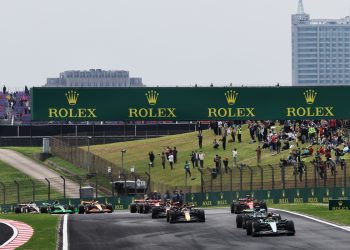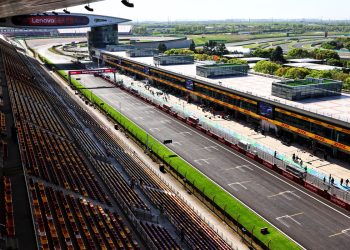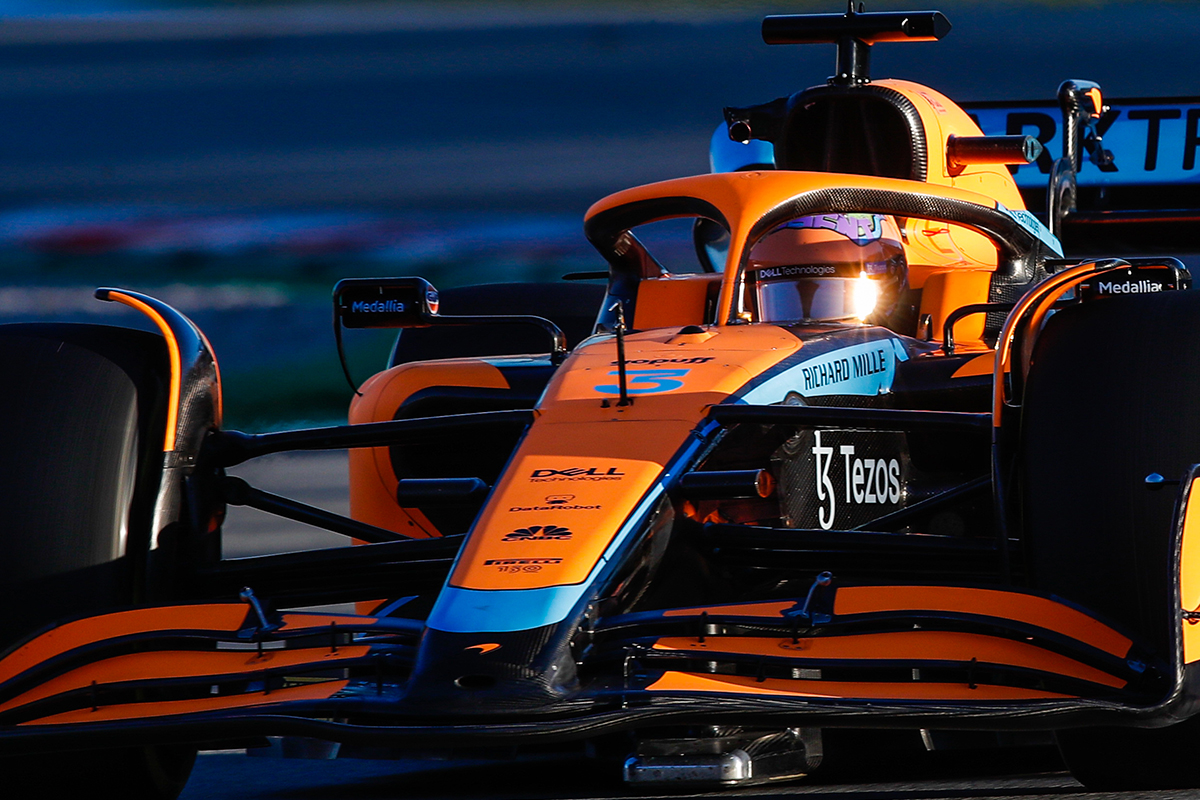
One of the key tasks for drivers during pre-season test is learning how to adapt to their new machinery.
Not only have the sweeping new aerodynamic regulations changed the cars' looks, but they've changed the way they produce their grip. That in turn has changed how they drive.
While teams will be poring over the data to understand what makes their new machines tick, the drivers will be left to dabble in the black art that is extracting the maximum from themselves.
And it is more an art than a science. The honest truth is that, despite the engineering excellence that goes into producing a Formula 1 car, the biggest performance differentiator is largely untapped.
A driver has the data to review, and their team-mate to compare with, but fundamentally they're left alone when it comes to operating their machine at peak performance.
Their engineer can give them pointers – you can brake later here, carry more speed there – but there it is the responsibility of the driver to transfer the theory into practice.
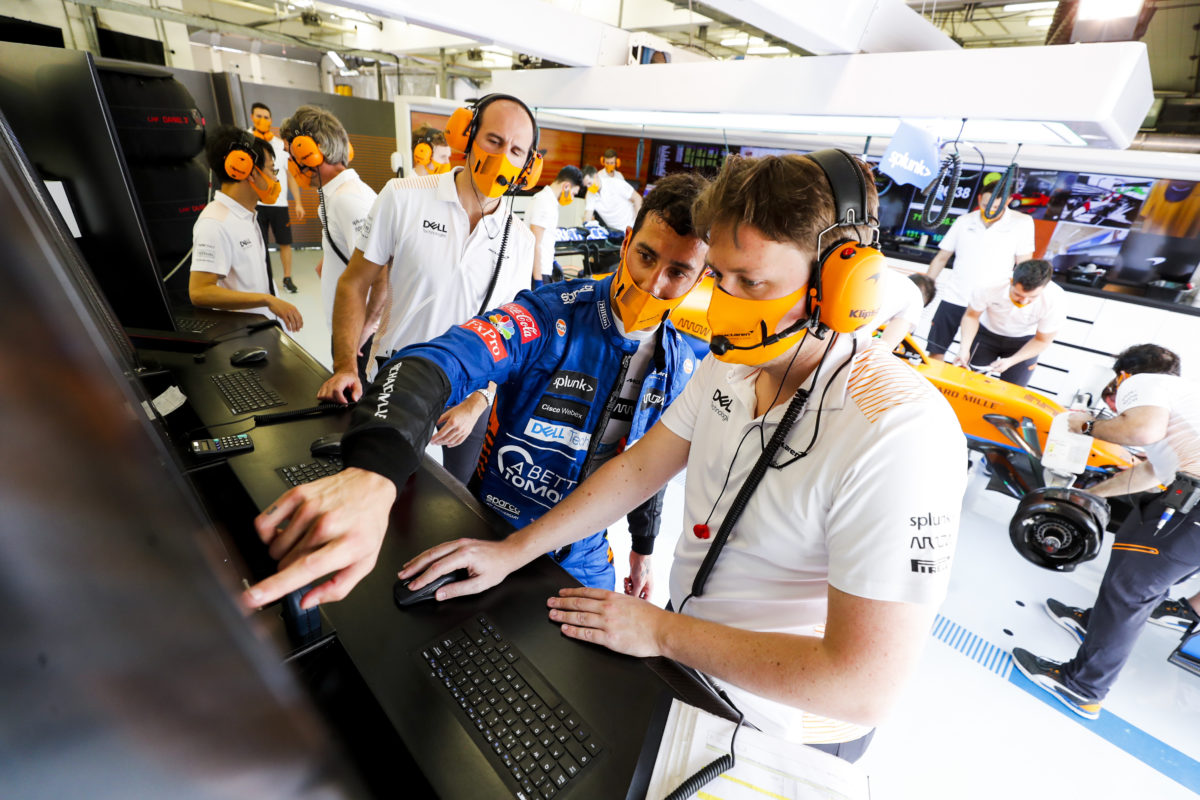
“The area that we're talking about is more sports science,” Anthony Davidson suggests as he talks to Speedcafe.com about how a racing driver adapts to a new car.
“And you're looking at someone like David Brailsford from the old Sky cycling team, someone who's a sports scientist that really delves into what makes the human brain tick and also how to get that human performance inside of that receptive performance, neurologically as much as physically inside the car.
“That side of it, the surface has only really been scratched with Formula 1 because the machinery is much more important than the driver.
“Most of the time, generally speaking, 80-90 percent of your performance over everybody else will come from your machinery. Then the last bit, that last 10 percent, is down to you – which driver will be more adaptive to that machinery?”
Davidson speaks from a well educated position.
A former Formula 1 racer himself, he's won the World Endurance Championship and worked with Mercedes F1 team in a reserve driver and simulator role, often supporting the race team by cutting laps back at the factory.
He has developed a reputation for his ability to analyse and relay what he's experiencing back to engineers, translating the inputs he receives in the car into workable items for the team.
In doing so, he's had to come to understand his own driving, and that of others, along with the limitations he works in.
It's given him an appreciation of what it takes to be successful, the core skills required of a driver, and some idea of how to hone them.
The simulator, he argues is not the silver bullet many suggest, and while it can be a useful training tool, it is far from perfect and certainly not for everyone.
In truth, teams' simulators have more value for the technical information they offer engineers than as a driver resource.
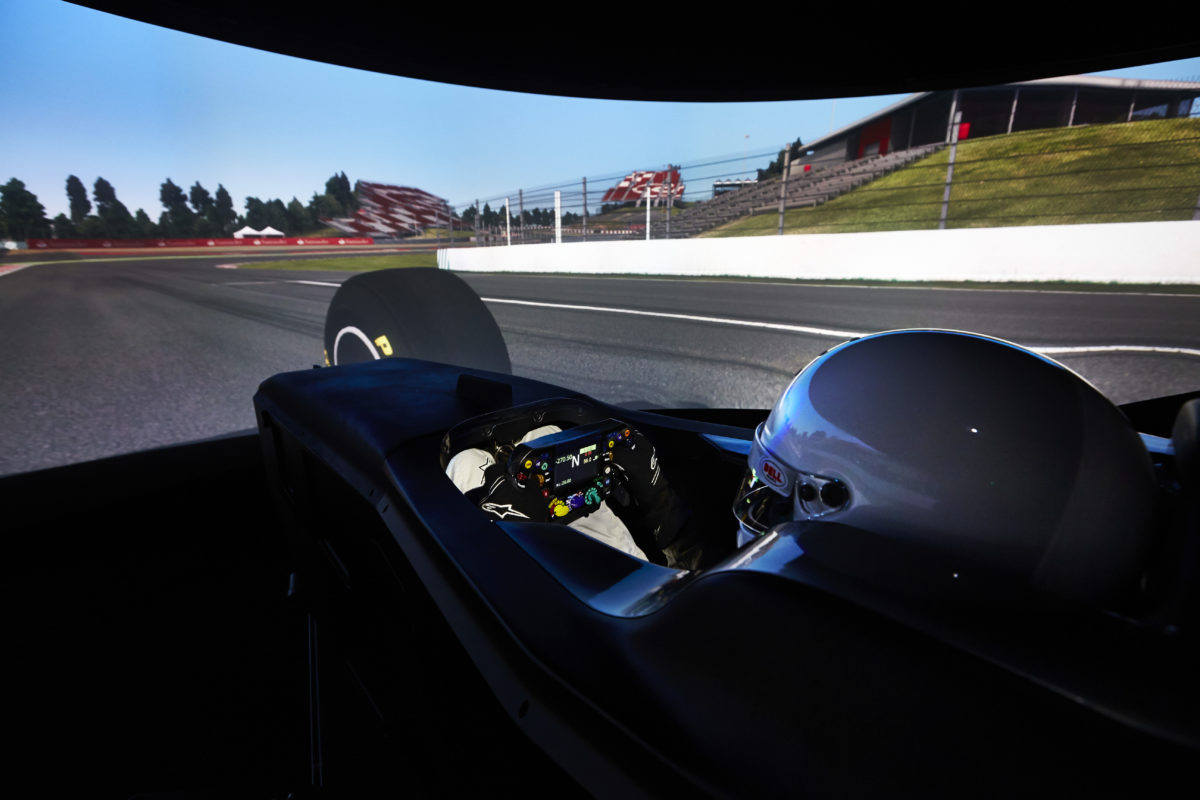
That many believe the simulator is among the best way to refine a driver's skills speaks to the simple fact that there is no proven scientific means or process in place.
And that leads to scenarios like that Daniel Ricciardo experienced at McLaren last year; a highly-rated race-winning driver suddenly steps into a foreign car and struggles in comparison to their team-mate.
“There are always other elements to it,” Davidson reasons.
“And those fine details, like other sports out there, like cycling, where the human is the important part, is the be all and end all of performance, it's those others sports like tennis as well, or football, they look into the human body much more than has ever been in Formula 1.
“Whether it's an eyesight thing, inner ear thing, it's a good example of something that can just go completely unnoticed,” he added.
“In Le Mans I had a pretty poor race performance [last year] in LMP2. I knew I wasn't feeling quite right, I don't know, I put it down to age – I'm 42.
“A couple of weeks after that I went swimming and noticed that my ears just got completely blocked in the water. I was kind of half deaf in both ears and they just wouldn't clear.
“I went to go and get my ear wax removed, because it was such a big build up of wax, and suddenly I got my balance back.
“I didn't feel it beforehand, but when I got the wax removed suddenly I just felt better. I felt sharper, my balance was really good, I felt more awake. It was really weird.
“I got back in the car a few weeks after that and had a storming performance and felt really good in the car.
“It's these little things that are missing from a human performance point of view to racing drivers that other sports definitely would have been on top of.”
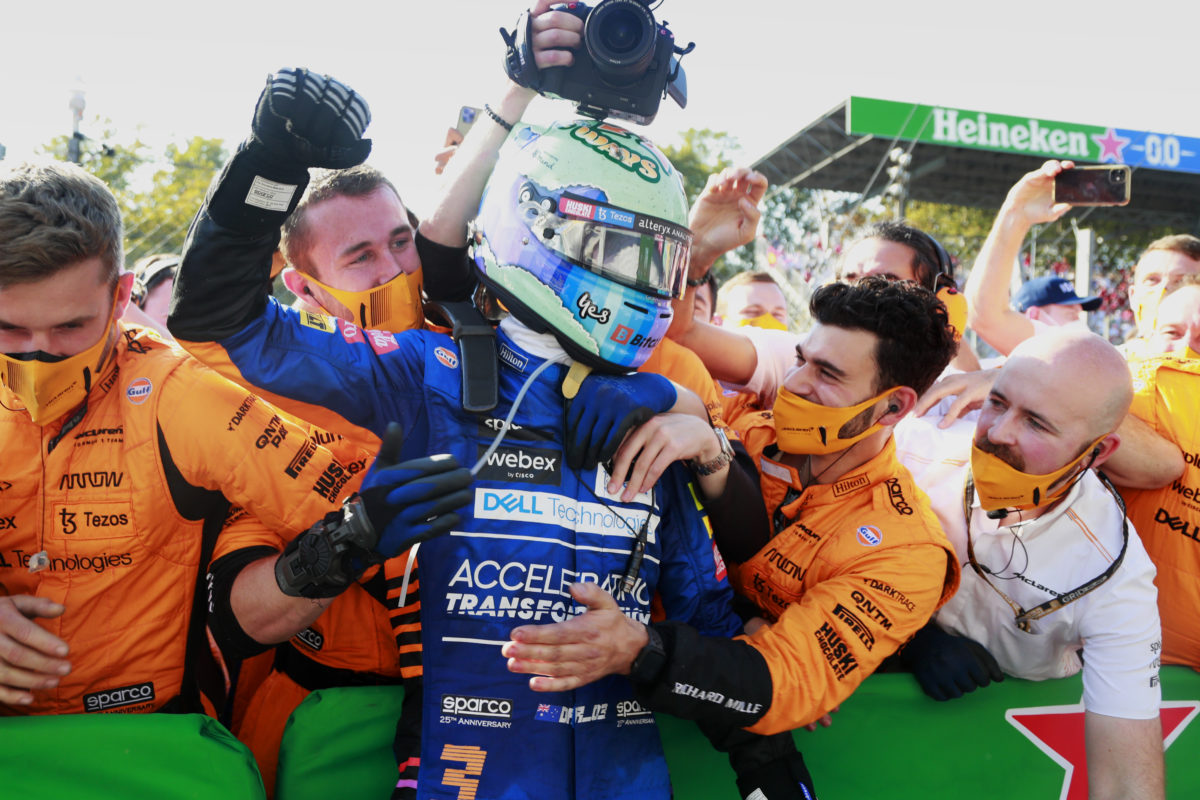
With the onus placed on a driver, the emphasis then is on their ability to understand the car and adapt to its needs.
But that, Davidson argues, it not a natural thing. He doesn't subscribe to the notion of ‘natural talent' and instead suggests a greater contributing factor is the driver's underlying personality traits, coupled with early exposure to the sport.
“A lot of racing drivers are very particular people,” he suggests.
“I don't use the word lightly, but borderline OCD; obsessive in their nature, and with a fine eye to detail.
“You need to be obsessed with what you're doing. Also, very analytical; you have to be striving for perfection.
“You're always looking, when you're in the car, for the perfect lap. It never happens.
“But people that haven't got that eye to detail, people that are maybe a bit more slapdash, bit more gung-ho the way they go about their lives, rarely make good racing drivers.
“We're the type of person that likes to line up their shirts by colour, or line up their knives and forks on a table at perfectly straight angles. That's what we like,” he adds.
“We're orderly people. In a way we're quite geeky, we're techy people. I think that is the part of the brain you need to be able to constantly analyse your performance.”
But there is also a physiological aspect, understanding the stimuli being fed to the body through the eyes, the vestibular, and auditory systems.
That is why the simulator isn't for everyone, as different drivers use different cues.
“That's another fascinating world where the brain really plays tricks on you,” Davidson agrees.
“The simulator is all about the brain, to believe its real, to end up trying to drive the car like it's a real car.
“So there's a physical element very much there in the car, they're not there as much in the simulator.
“You get some degree of motion cueing but you're missing out on the g-forces, especially sustained g-force.
“Every driver that comes and drives a simulator, you can have some great drivers in real life, very adaptable driving all kinds of cars really well, and they jump on the sim and they just cannot do it, they cannot feel it.
“They spin or they're slow or they feel sick. It's a really interesting tool to see what makes different drivers tick, and not enough study has really been put into this.
“I think from a human performance point of view, something I see time and time again, is how different drivers react to it and adapt to it.”
The only way to truly practice and adapt to a new car, Davidson reasons, is to drive it.
The trouble is, Formula 1 rules heavily restrict when and where teams can run.
Heading into 2022, there are just six days of pre-season testing, up from three days going into last year.
After that, it's the various practice sessions throughout the year by which time a driver's ability to adapt has been compromised as attention is instead focused on fine-tuning car performance.
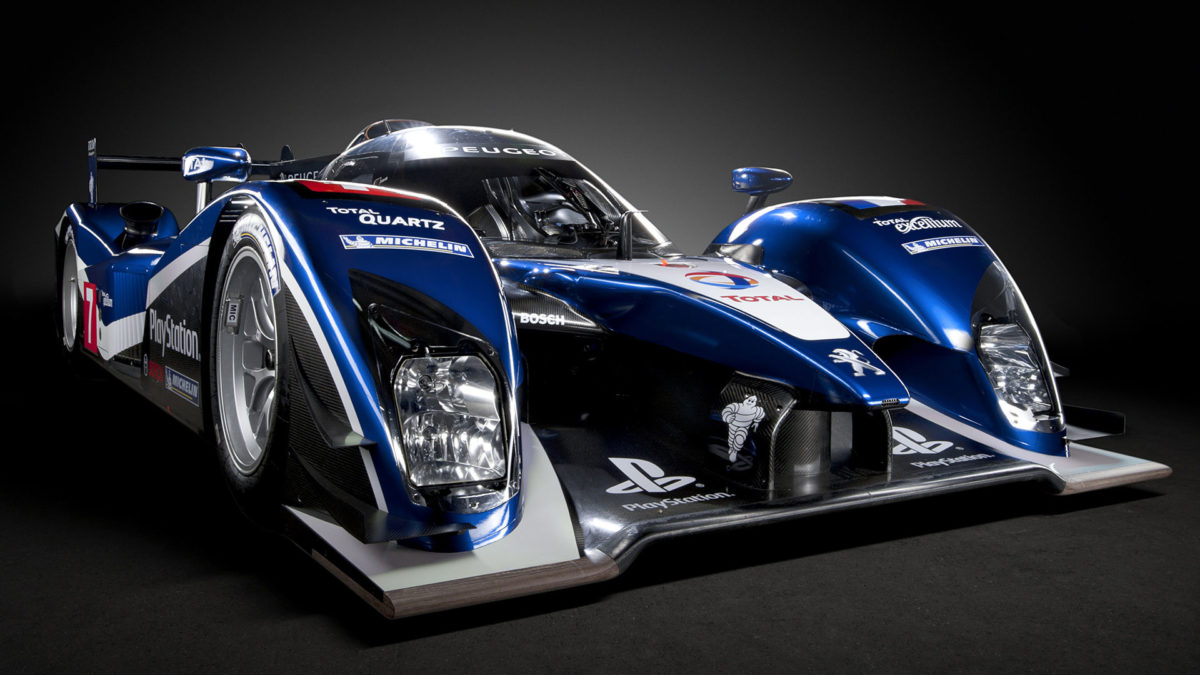
“Every single car feels completely different, because they are completely different, they're made a different way,” he explains.
“You do get drivers that just, for whatever reason, click with a certain car, or even a certain category, more than you will with anything else.
“I could look back at my career and say the car I was best in was the Peugeot 908 Le Mans car. I don't really know why, it just completely gelled.
“It was like it was an extension of my body… won loads of races in it and was pretty much untouchable in it, and I can't really put my finger on exactly why that is.
“Certainly that happens to Formula 1 drivers as they change teams, like Daniel,” he adds.
“He was mega in Red Bull, went to Renault and took a little bit of time to adapt you must say, and they got there by the end of it. By the end of his time at Renault, he was flying.”
The process at McLaren has taken longer, but Davidson suggests there were moments in 2021 where it came together for Ricciardo.
But at the same time there were moments when it didn't work as he continued to adapt to the car. Processes that were automatic he now had to think about, ever so slightly blunting his edge.
In a sport as competitive as Formula 1, that's all it takes to drop off the pace.
“All I know is that you do definitely click better with some with some cars than others,” Davidson suggests.
“It's something that I think a lot of practice in that car can get you very close to achieving perfection, but it will always be, if it's not in your nature to drive like that, or for it to be just a thoughtless process, then it's a real struggle to get to the heights that you were in a car that did allow you to just drive without thinking.
“It's like driving a road car for the first time; manual gearbox, clutch, bite point, all that kind of stuff. You spend a lot of time at the beginning thinking about what you're doing.
“When you've clicked, when you don't think about it anymore, you just drop in your car, start the engine, push first gear, drop the clutch, away you go.
“That's when you know you've completely nailed it, and that's when the lap time has come in a racing car.”
Understanding how that process happens, and being able to consistently replicate it, is key to being able to identify the good drivers from the great.
But for now, it's unknown and our measures are all subjective.
“There is an answer, there has to be an answer,” Davidson declares.
“But I can't give you that answer, Daniel probably can't give you that answer himself, and there nobody that knows.
“The team might have their ideas but all they really see is the mechanical elements of the car.
“The driver's not tapped into. They don't know the forces going through the steering wheel from the hands and the arms, and what the core of the body was doing, what the driver's listening out for.
“None of this stuff has been studied before, or at least properly. There's no database built up from legends of the sport like Sennas and Schumachers and Hamiltons.
“No one's got that data. No one knows why those drivers are exception talents. We put it down to magic, it's just God's gift to racing.
“You're not born with it because everybody struggles when they first drive a powered vehicle. How can you possible be naturally gifted at something that is so alien?
“Driving is not walking; having to figure it out can't be a natural gift.
“We like to believe it's magic. It's not magic. It's something physiological, neurological that you either have or you don't.
“Then it's how you feed that, it's the whole nature/nurture thing. It just wouldn't work, one without the other.
“From all angles, all aspects, it needs looking into because it's fascinating, it really is. But nobody has the answer as to why some drivers perform better than others.”
















